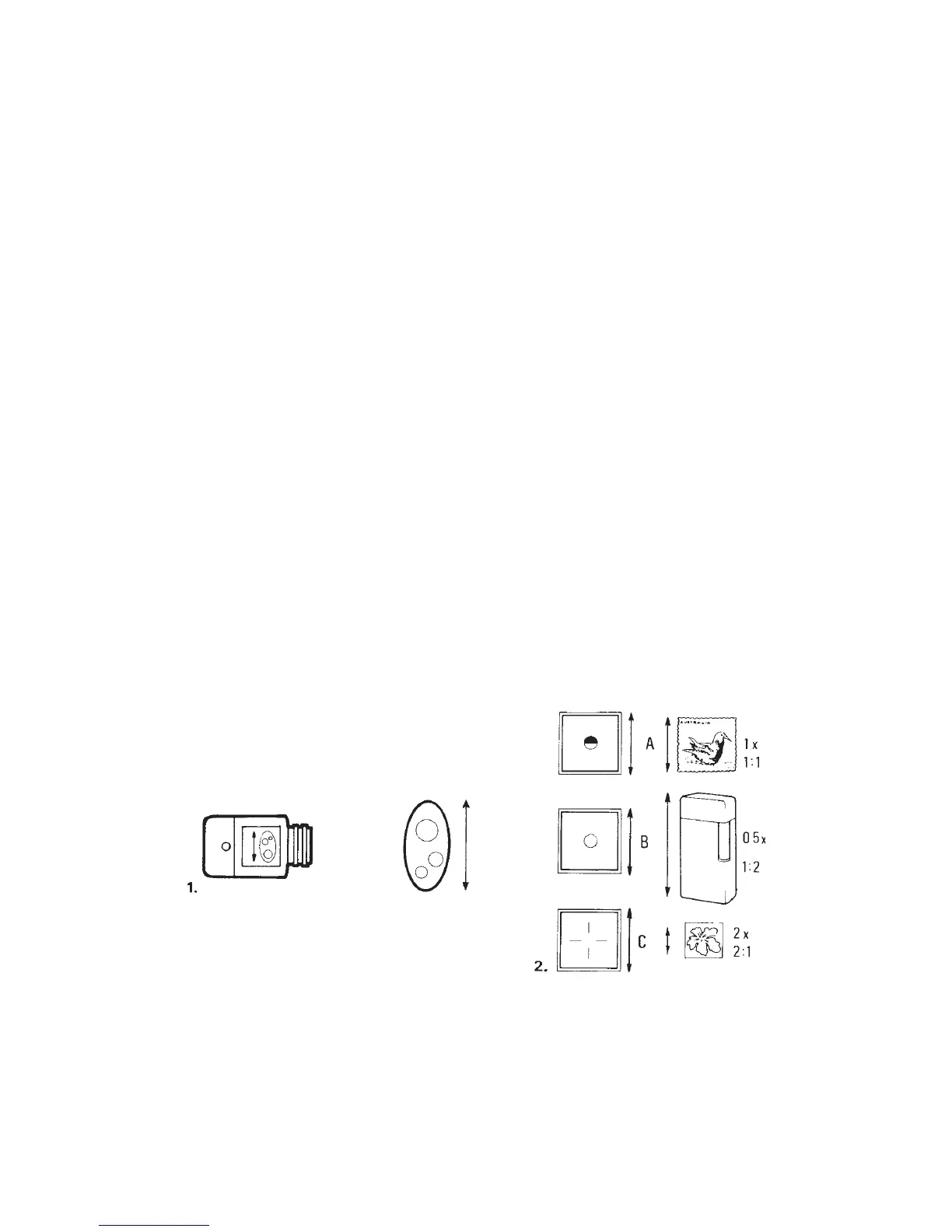Close-Up Photography on Film or Digital 353
want to photograph, the farther away the lens needs to be moved. The length of the tube
required to cover a specifi c area is determined by the focal length of the lens. The longer the
focal length of the lens, the longer the required tube. With extension tubes the lenses cover a
smaller area but the image is formed in the same way as at longer distances (see Chapter 14).
You can cover the same area from different distances with different focal length lenses.
The distance between the lens and the subject then determines the perspective with three-
dimensional subjects. Different focal length lenses cover different background areas and more
or less blur the background (also discussed in Chapter 14).
Working Distance
The distance between the front of the lens and the subject in close-up photography is often
called the working distance because it is really the distance within which you can work with
the subject, if necessary. In some cases such as surgery you need a long working distance. In
dangerous situations such as welding you want a long distance. Longer focal length lenses give
this longer working distance. When working on a copy stand or in many other situations a
shorter focal length is preferable to reduce the possibility of camera motion affecting the pic-
ture sharpness. You may also select a specifi c focal length lens, such as the 120 mm Makro-Planar
in the V system as it is designed optically to produce the best image quality in close-up work.
Magnifi cation
Magnifi cation is the ratio in size between the actual subject and the size of its image recorded
in the camera (see Figure 19-1). It is helpful to understand magnifi cation as it determines
Figure 19-1 Magnifi cation. (1) Magnifi cation is the relationship between the size of the actual
subject area and the size of this area recorded in the camera or seen on the focusing screen
for the fi lm or sensor size. (2) If the subject is about the same size as the image on the
screen, we have 1:1 magnifi cation (A); when the subject is twice as large we have 0.5, or
1:2, magnifi cation (B). When we fi ll the screen with a small subject that is half as large as its
image, we have 2, or 2:1, magnifi cation (C).

